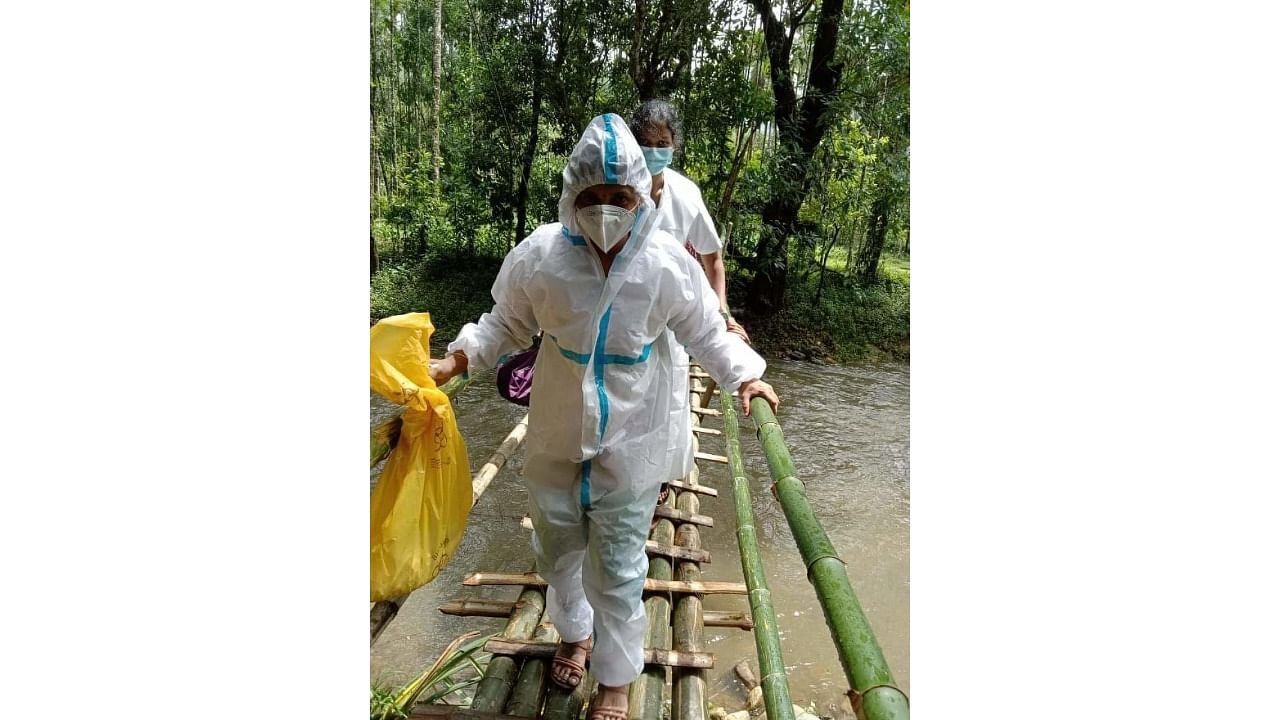
Despite heavy rain, four female health staff of the Kollamogru primary health centre (PHC) of Sullia taluk in Dakshina Kannada district undertook a treacherous journey to reach an interior village of Kalmakar with the help of a temporarily constructed bamboo bridge over a swollen river to test four primary contacts of Covid patients.
Despite the challenges that the monsoon brought with it, Sullia taluk's six PHCs have collected 4,203 swabs, averaging 74 swabs per day, in the months of June and July, in contrast to 1,450 swabs, averaging 16 swabs per day, over the summer months of March, April and May.
Sullia taluk health officer Dr Nandakumar B told DH, "This happened last month where our lady health visitor (LHV), auxiliary nurse midwife (ANM), lab technician, and accredited social health activist (ASHA) walked on a 'hanging bridge' over a river. Because of heavy rainfall, the river levels have risen significantly.
"When roads are cut-off, we undertake such outreach programmes where we use bypass roads to reach villages. With a transport system lacking, we have to go by walk as our vehicles can't reach there."
50-year-old Hemalatha J A has been working as a LHV in the health department for 23 years.
She told DH, "Pre-monsoon, the river water levels were only ankle deep and we could just wade through the water barefoot and go to the other side. But in the past few days, due to heavy rain, there's no other way than to use the makeshift structure."
31-year-old Navya Koppadka, a lab technician donning a PPE suit head to toe with three of her colleagues behind her, crossed the bridge on June 15.
It had been seven days since four primary contacts had been exposed to three Covid patients in Idyadka area of the taluk.
"It's protocol to test primary contacts on day 0 and day 7. Since they could be Covid positive, we could not call them to the PHC for swab collection. On day 7, we had to go and test them, even though this bridge was quite shaky," she said.
Apart from the difficult terrain, she says their main problem is lack of a strong mobile network.
"It's an interior area that can be accessed only by walk. We have to stop the jeep by the roadside and continue on foot from there. Last year, during the first Covid wave, we didn't have to do this as there were no cases in interior areas," she added.
